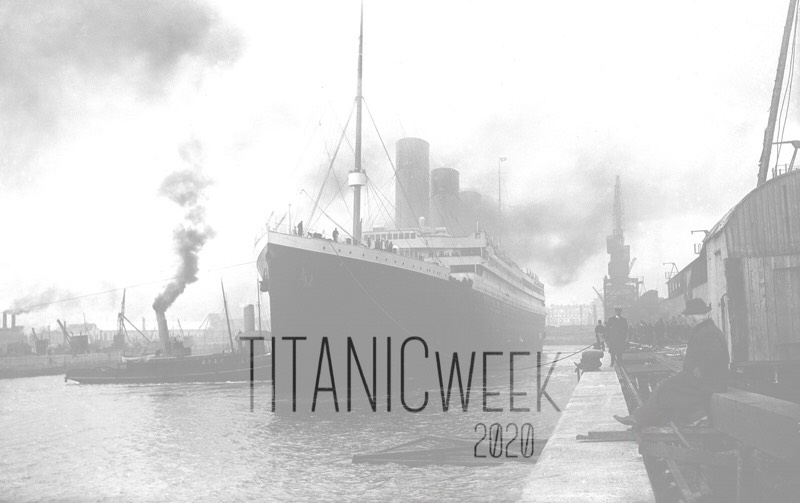“That Together With Sorrow and Worries”: Anna & Adolf Dyker
Adolf Fredrick Dyker, who went by “Fred,” was born on a ship.
Fred’s parents were making a transatlantic journey from Sweden to New Haven, Connecticut, where public records indicated his father had lived since about 1870.
But the elder Mr. Dyker, who was naturalized in 1879, still owned a café in Stolkholm, where he traveled often. So Fred, despite spending at least some of his childhood in the United States, received his education in Sweden.
After a stint in a New York bank, Fred found work in his kinda-sorta hometown of New Haven, Connecticut, as a tram conductor on the Woodmont line during the summer of 1911.
It was recorded by the American Red Cross that Fred’s pleasant and courteous approach made him “an unusually valuable employee” who would have been fast-tracked for promotion. He earned $14 a week, which was probably a reasonably handsome paycheck for 1911.

Union Station in New Haven, Connecticut, circa 1914, where Fred Dyker would have reported to work as a tram conductor.
I’ve also read that Fred kept a collection of the tram stubs he’d taken on his shifts, but I cannot find a primary source for this. It’s pretty adorable, though, so let’s assume it’s true.
In 1908, Fred married Anna Elisabeth Judith Andersson, a Massachusetts-born American who was also of Swedish descent.
Anna went by “Liza,” and was a musician and singer. She had attended Yale School of Music and sometimes participated in church choir, and was also giving music lessons to get by. Per census records, they lived in West Haven, Connecticut, with Liza’s parents.
In 1911, Liza and Fred received word that Fred’s father was dying in Sweden; they re-mortgaged their home to enable themselves to go abroad to arrange and settle his estate.
Titanic was their ride home. They boarded as Third-Class passengers at Southampton on April 10, 1912.
The steerage class is often considered minimal at best—particularly in contrast to the nearly criminal opulence of First Class—but in truth, it was some of the best quarters, dining, and overall treatment than some of its passengers would experience elsewhere or ever again.

The Third-Class Dining Saloon on RMS Olympic, Titanic's elder sister, circa 1991. Courtesy of Bedford Lemere & Co.
On the night of the collision, Liza and Fred were wakeful. They were so awake, in fact, that Liza reported that she was still in her dayclothes, sans hat.
The couple soon found themselves at Lifeboat 16, which was far aft and under the supervision of Second Officer Charles Lightoller.
By all reports, Fred did not attempt to board the lifeboat with his wife, but rather stepped aside for other women and children. Fred gave Liza a kiss, as well as his hand to help her climb the gunwale, and said, “I’ll see you later.”
His tone has been reported to be flippant and cheery, and this is not unlike many husbands and fathers who put their loved ones into lifeboats alone. As the lifeboat pulled away from Titanic's side, Fred waved at Liza from the boat deck.
And as was true for so many broken couples and divided families, Liza and Fred would never see each other again. The Brooklyn Daily Eagle reported Liza’s statement in its April 19, 1912, issue.
I ran to the deck where I met Adolph. He had with him a satchel which contained two gold watches, two diamond rings, a sapphire necklace and 200 crowns. He couldn’t be saved in the boat I was in and he grabbed a preserver and said he would jump and try to save himself. That was the last I saw of him.
To add cruel insult to debilitating injury, Liza said the satchel that Fred had given to her was stolen as she was boarding Carpathia.
On board the rescue ship, Liza was suffering from extreme exposure and was under the care of the doctors on board. She managed to send only a brief telegram to New Haven that said, “Liza saved, Fred lost.”
At only 22 years old, she was already widowed.
The Brooklyn Daily Eagle reported on April 19, 1912, that Liza was “hysterical” when she disembarked from the Carpathia.

R.M.S. Carpathia docked in New York City after rescuing Titanic survivors, April 1912. From the George G. Bain Collection, courtesy of the Library of Congress
When she finally got home, Liza was weary, bereaved, and bedridden for “many weeks.” According to her American Red Cross file, she was caused to lose her singing voice entirely from the illness and trauma that she’d suffered, and was fearful that she’d never regain it.
I lost my husband and everything I owned, I was wounded when I was brought from Titanic, that together with sorrow and worries has completely broke me down. My health have not recovered, I have tried to done some work to earn my living...
Liza sued the White Star Line for the loss of her husband, as well as her luggage.
It would seem that Liza’s voice eventually recovered, as she reportedly returned to music lessons. She remarried some years later, and died in New Jersey in 1971.
Fred Dyker’s corpse, if found, was never identified. As was the case for the remains of virtually all Third-Class passengers, if it had been recovered, it would have been buried at sea.
As Fred Dyker was born on a ship, so he died on the same.
He was 23 years old.
share
